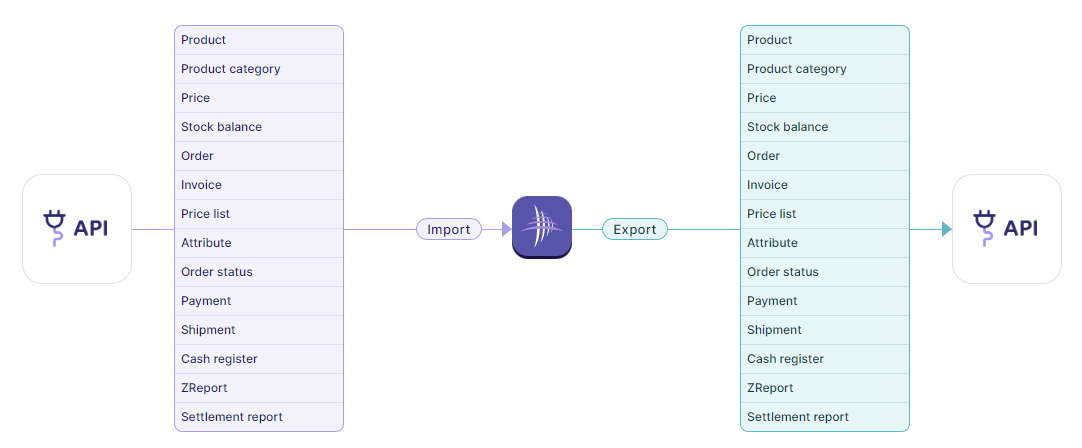Become a partner
Thank you for your interest in joining the Sharespine ecosystem!
Become a partner of Sharespine and use the Integration Platform API to build your own connector to systems not already included in our ecosystem. You can show your interest by filling out this contact form.
Step-by-step guide
- Fill out the form and you will be contacted by our sales department.
- You will together with sales form a business case for the integration. The business case needs to state which functionality that the would-be customer will require.
- Once both parties agree on the business case a project will be formed and you will be given access to a test environment.
- During development Sharespine technical resources will be available for support as agreed.
- Once development is completed a certification review will be done from both a functional and technical perspective.
- When validation is passed the connection is ready for customer onboarding.
Certification
To become available to customers, your integration with the Integration Platform needs to be certified that it meets our minimum requirements. Additional requirements may apply depending on the functionality of your integration.
Outlined below are the requirements we will review your integration against during the certification process.
Certification is mandatory for Public and Embedded projects but the requirements should also be seen as a guideline for Private connectors.
Implemented functionality
The first checkpoint is to validate the connectors implemented functionality. The expected level of functionality required to meet customer expectations is agreed on before the development project starts.
Provided documentation
Sharespine will have the first-level end user support for all connectors in the ecosystem so to make sure that the support works seamlessly, a handover of support documentation is required. The documentation also needs to be maintained by the partner when new or updated features are introduced.
Use of Event Log messages
The partner connection should use the API to add event messages so that the user knows what occurred in the remote system during the import/export. It should be used to record relevant events so that the customer and support personnel can follow the flow of data. Refer to the Log endpoints.
Use of Graphical overview
The Integration Platform user interface provides the end user with a graphical overview of the flow of data between then connected systems.

Since the new Public connector should fit seamlessly into this picture the connection needs to tell the Information Platform what capabilities it has. This is done using the /connection/{localId}/plug endpoints
The list below is used to indicate which plugs are activated for the connection and the direction of the data flow. It is important to remember that the direction of data flow is always from the Integration Platforms point-of-view. Please refer to Import and Export for more information.
| Plug | Declare the plug when |
|---|---|
| Attribute | Your integration maintains or requires the list of available attributes. Attribute values are stored within the product record and does not require the attribute plug |
| Cash register | Your integration maintains or requires the list of defined physical cash registers |
| Ledger account | Your integration maintains ledger accounts or it needs to know the list of available accounts in order to be able to create ledger entries |
| Ledger entry | Your integration creates ledger entries for bookkeeping purposes or consumes current entries in order to build reports etc |
| Invoice | Your integration creates invoices or consumes created invoices for bookkeeping or reporting purposes |
| Order | Your integration creates or reads available orders for order management tasks like warehouse- and shipping booking |
| Order status | Your integration reads or sets just the order status which is a a subset of the order record |
| Payment | Your integration adds or reads payment transactions related to orders |
| Price | Your integration reads or sets just product prices which is a subset of the product record |
| Price list | Your integration maintains or requires the list of available [price lists]. Actual prices are stored within the product record and do not require the price list plug |
| Product | Your integration reads or maintains product information and updates. Used when complete products are managed as opposed to the price or stock plugs |
| Product category | Your integration maintains or requires the list of available categories. Product records are linked to the category records when used |
| Settlement report | Your integration creates reconciliation information as settlement reports or reads the information created by a Payment Service Provider (PSP) |
| Shipment | Your integration maintains or reads an orders shipment information |
| Stock | Your integration reads or maintains just a stock value which is a a subset of the product record |
| Z report | Your integration creates z reports, a.k.a daily taking reports, or reads created reports for bookkeeping or reporting purposes |
Use of User-agent header
The User-Agent header is a requirement from a support point-of-view. A header containing your application name and emergency developer contact information will aid in customer support in the future.
